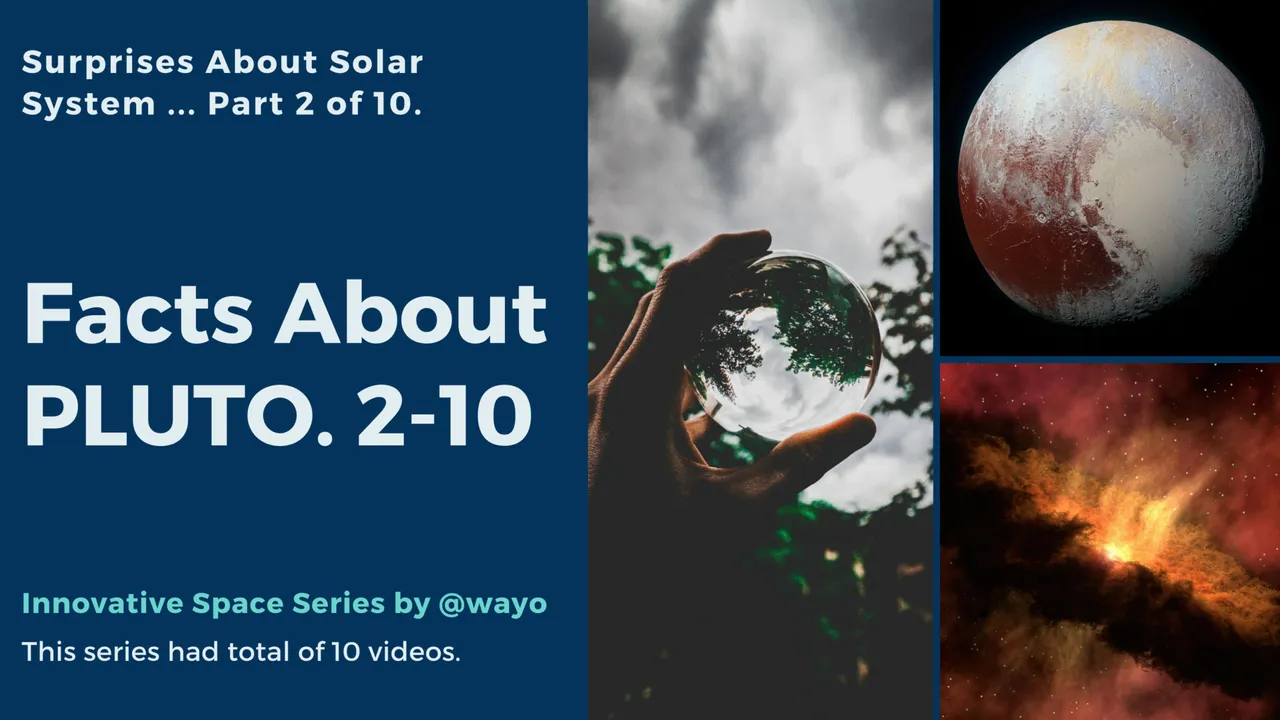Hello Star Steemians,
Planet Pluto name is derived from Roman God associated with underworld. The name "Pluto" was proposed by eleven year old school girl name, Venetia Burney from Oxford, England. In year, the International Astronomical Union (IAU) 2006, planet Pluto was reclassified as Dwarf planet. This planet was discovered by on Feb 18th 1930 by Lowell Observatory, named after Percival Lowell who also predicted
Pluto's location in year 1915. Pluto is 5 moon rotating around him, they are as as such.
- Charon (1978)
- Hydra (2005)
- Nix (2005)
- Kerberos (2011), earlier known as P4
- Styx (2012), earlier known as P5
Pluto has one third of its portions or surface into water (in form of ice), the interesting fact thing about this water is that, it is more than more water than earth ( around 3 times water present on Earth, combining all fresh water resources and oceans). Pluto’s has diameter is 2,372 km (1474 miles). The remaining 2/3 of the surface is solid rock. The master is smaller in size than his disciple, Pluto is smaller than some of his moons. Pluto has eccentric and inclined orbit. Pluto was visited by spacecraft "New Horizon" send from earth, launched in year 2006, took around 9 years for it to reach Pluto (i.e. New Horizon flew by Planet Pluto on July 14th 2015).
The prediction came from deviations he initially observed in 1905 in the orbits of Uranus and Neptune.
Pluto sometimes has an atmosphere, Yes !! You read it right. Due to Pluto's elliptical orbit, takes it closer to the Sun, its surface ice melts and creates a thin or bleak atmosphere mainly of nitrogen, which eventually escapes planet.
Pluto also has a methane haze, 161 km above the surface. Pluto when travels distant from the Sun, its temporary atmosphere then freezes back to its solid state.
Thank You.
@Wayo
▶️ 3Speak
